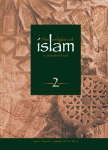The Religion Of Islam vol.2

Chapter XXV - The Style of Composition Employed in The Imparting of Traditions
For the purpose of expressing how a tradition had been communicated from one person to another, certain introductory verbal forms were selected by duly qualified persons. And it was incumbent upon every one about to narrate a tradition, to commence by that particular form appropriated to the said tradition; this was done with a view to securing for each tradition the quantum of credit to which it might be justly entitled.
These introductory verbal forms are as follows: (1) ÍÏËäÇ “He told us”; (2) ÓãÚÊå íÞæá “I heard him saying “; (3) ÞÇá áäÇ “He said to us”; (4) ÐßÑ áäÇ “He related to us”; (5) ÃäÈÃäÇ”He informed us”; (6) Úä “From.”
The first four introductory forms were to be used only in the case of an original narrator communicating the very words of the tradition to the next below him. The fifth introductory verbal from was used when a narrator inquired of the narrator immediately above him whether such and such a fact, or circumstance, was or was not correct. The last form was not sufficiently explicit, and the consequence was that it could not be decided to which of the two persons the tradition related belonged, so that unless other facts be brought to bear upon it, it could not be satisfactorily proved whether there be any other persons, one or more than one, intermediary between the two narrators. As to any external facts that might prove what was required to be known, the learned scholars gave the following opinions:
First : If it be known with certainty that the narrator was not notorious for fraudulently omitting the names of other parties forming links in the chain of narration, and who also lived at such a time and in such a locality that it was possible, although not proved, that they visited each other, then it might be taken for granted that there were no other narrators intermediary between these two.
Secondly : Other learned authorities add that it must be proved that they visited each other at least once in their lifetime.
Thirdly : Others assert that it must be proved that they remained together for such a time as would be sufficient to enable them to learn the tradition, one from the other. The aforesaid restrictions simply tend to show far the collectors of hadîth have gone to admit as reliable any tradition of the Prophet.
